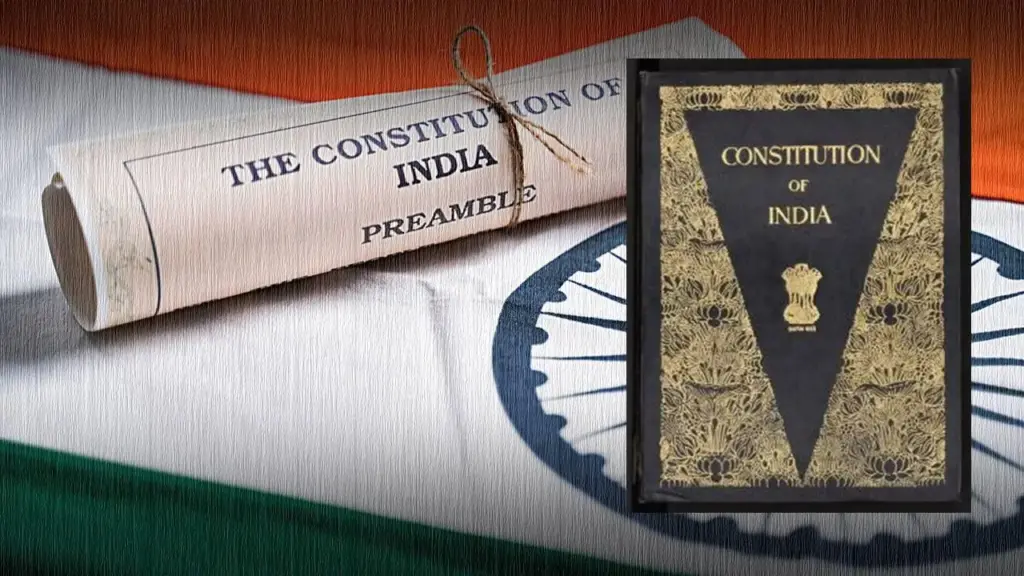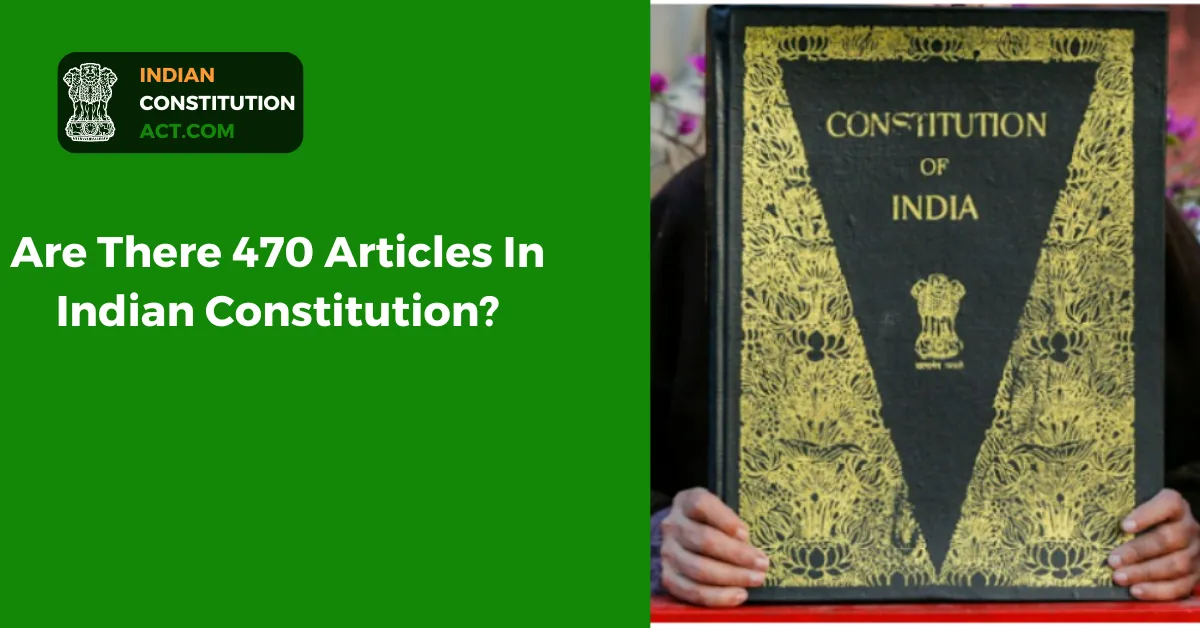Are you aware of how many articles are present in our Indian Constitution? Maybe not, because some people believe our Constitution has 470 articles. Is this true? Or is it just a myth? It is important to learn how many articles the Constitution has. It is mostly important for the students preparing for the UPSC exam. It is important to know how many articles are in our constitution. Read this blog to learn about the articles in the Constitution of India.
What is the Indian Constitution?

The Indian Constitution is a very comprehensive document that serves as the foundation for the governance of the nation. It carries several articles that cover a very large range of topics, principles, and rights that guide the functioning of the democracy of India. It was officially adopted on 26th January 1950 and it was made during an elaborate drafting process that unfolded on 26th November 1949. This day is known as the Constitution Day. It started with 395 articles which are organized into a total of 22 parts, accompanied by 8 schedules. But now it is compromising 448 articles spread across a total of 25 parts and they are enriched by 12 schedules. This comprehensive transformation has been done through 105 amendments.
Dr. B.R. Ambedkar, N. Gopalswamy, K.M. Munshi, Syed Mohammad Sadullah, N. Madhav Eao, T.T. Krishnamachari, and Alladi Krishnaswamy were the legal experts of the drafting committee. The chairman of the drafting committee Dr. B.R. Ambedkar was considered the chief architect. To draft the constitution it took a total of 2 years, 11 months, and 18 days and it was finally on 26th November 1949. The original copies of the Constitution are preserved in special Helium-filled cases in the Liberty of the Parliament of India.
There is a total of 448 articles in the Constitution of India. Every single set of articles covers very important parts of the constitution which includes the executive, legislatures, schedules, parts of the Indian Constitution, statutory bodies, fundamental rights, constitutional bodies, and more.
Dr. B.R. Ambedkar played the biggest role in framing the Constitution of India. The document created a framework that clearly outlines the fundamental organization practices responsibilities, and the authority of governmental institutions as well as the fundamental directive principles, obligations, and the rights of citizens.
Is There Are 470 Articles In the Indian Constitution?
The amended constitution has a preamble and 470 articles, which are officially grouped into a total of 25 parts. There are 12 schedules and 5 appendices. It has been learned that it has been amended 105 times and the latest amendment became very effective on 15th August 2021.
Is Learning About the Indian Constitution Important For UPSC Exam Aspirants?
Articles of the Constitution of India should be known to be a UPSC Exam aspirant. It has been claimed that not every article of the Indian Constitution is a must-know for the UPSC Exam. All the articles in the Constitution are important from the perspective of the IAS exam.
India is known as the world’s largest democratic country, adopted on 26th January 1950. The constitution was officially formed as the framework of the country’s rules and regulations. The constitution commences with a declaration of its fundamental principles, embodying the true essence of India. It served as the guiding principle to assess the validity of laws and government actions, it makes the Premble the heart of the Constitution of India.
The Constitution is a comprehensive document that serves as the pure foundation for the governance of India. This contains a lot of articles that cover a huge range of topics, rights, and the principles that guide the functioning of the Indian democracy.
The Constitution of India earlier has a total of 395 articles and 22 parts. But after some time 3 parts got added to it as modifications and made a total of 25 parts. Under all the 25 parts of the Constitution, additional articles were also added.
Constitution of India Important Details
There are 105 amendment acts passed to the Constitution of India. The Constitution establishes a parliamentary government with unitary characteristics and a framework. The president of India is the official head of the Union Executive under the Constitution. The council of the Parliament of the Union is comprised of the President, the Rajya Sabha, and the House of the People as per the Artice 79 of the Consitution of India.
As per Article 74(1) of the Constitution, the President performs his or her duties on the advice of the Prime Minister and the Ministers Council. The proper executive authority rests with the Council of Ministers and because of that it is led by the PM of India.
A lot of people are not aware that the union of states also known as Bharat makes up the Constitution of India. India is a Sovereign Socialist Secular Democratic republic with a parliamentary system of government. The Constitution of India was officially approved by the Constituent Assembly on 26th November 1949 and then it finally got effected on 26th January 1950.
It can be claimed that the 395 clauses in the original Constitution of India were originally divided into 22 parts. But after a lot of time in the Indian Constitution, some more articles were included and the total article was 448 and 25 sections. But as of 2024, there are around 470 articles in the Constitution.
What Does Article 470 In The Indian Constitution Say?
Article 470 of the Indian Constitution is about false documents or electronic records made in part by forgery. A document is respect of which or any part of which, forgery has been committed is a forged document.
What Does Article 471 In The Indian Constitution Say?
Article 471 in the Constitution of India is about fraudulently or dishonesty which uses as genuine any document which they know or they have a reason to believe to be a forged document. Such types of acts are punishable.
